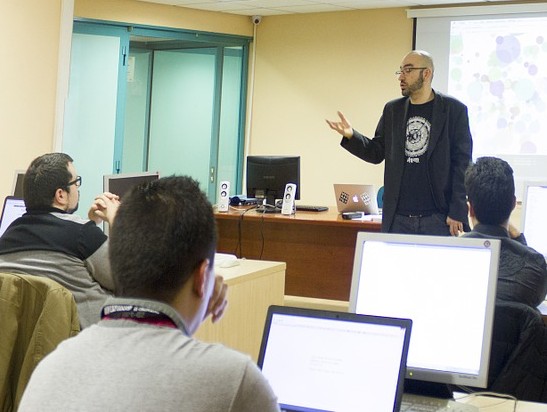Tracking the success of employee training
- 5 Min Read
Positive and negative feedback on training courses can ensure businesses get a return on investment. But gathering and understanding honest employee feedback can be a challenge.
- Author: Helen Dugdale
- Date published: Mar 16, 2022
- Categories

Now more than ever, offering training to employees will aid job satisfaction and retention, improve performance and increase results in the workplace. More and more employers are looking at their learning and development opportunities to understand how to make them best fit their current and future employees.
One critical element of training programs which can be easily overlooked is measuring their success and gaining an understanding of how they were received by employees.
Looking at how successful any training was for the participants is far more than just sending out a feedback form. It requires numerous discussions and time spent with employees to glean how helpful the training was and why.
HRD spoke to Alicja King, senior content manager for myskillcamp, who explained why measuring the success of employee training is as vital as the training itself.
“It takes time and money to decide on what to train a team on, choosing a course and finding the right time,” King says. “So, if you find out that your employees enjoyed the training, you know from at least one metric – you achieved a return on that investment.”
She goes on to explain that should HR teams discover an element of a training program is unsatisfactory, they know not invest in that particular training method again. “The worst thing you can do is not measure, it’s like throwing away your budget,” King says.
Choosing the right method
Starting to measure levels of satisfaction around training could evoke an onslaught of head scratching; how do businesses set about doing this, what are the methods, and how long does it take? King suggests starting off simple and moving onto more in-depth methods to gather relevant data and responses.
“The best way is to just ask employees. We find a good way to measure satisfaction is putting together an anonymous quiz which asks for feedback on every aspect of the course,” she says. “You want people to be open and honest while giving you as much information as possible.”
Close monitoring of employees’ activity and quality of work after attending an online or in person training course is an easy way to look for success. However, whenever there is mention of ‘monitoring’ behaviour there is usually mutterings around feeling watched by Big Brother, which in most instances is not the case. Businesses looking at employee productivity and success in their roles is as much about growing the individual as it is the business.
“The best way to ‘monitor’ changes in an employee’s activity is to communicate with their managers,” King says. “They will see these changes through meetings, their tasks, and their successfulness in reaching goals. That’s why an important part of training is to get the heads of departments and managers onboard.”
Dealing with disappointment
Once businesses start to ask for feedback on training, they may not always hear what they were hoping for. So, what if an employee feeds back with disappointment around a recent course?
King recommends managers ask for specifics about what employees were not happy with, to be able to move forward positively. “You need to find out what they did not enjoy and why. It could be the course topic, the media used, the timing of the training, a lack of personalisation, or any number of reasons,” she says.
“If you receive negative feedback, often it may be time to look at if you need to personalise your training more, for instance, does it suit the learner? Otherwise, it’s simply a case of reacting to their feedback until you get a winning formula.”
The four key measuring metrics
Thankfully for businesses there are four clearly defined measuring metrics which can be easily implemented into training evaluations.
- Satisfaction – did the employees enjoy training? Did it make them want to take more of your courses and will it affect their results in the short and long term? How do you test for satisfaction? Look at quiz feedback from during and after the training course.
- Learning – evaluate what employees have learned due to your training. It will affect the type of courses you may invest in in the future and who takes them. How do you test for learning? Study employee knowledge before, during and after the training with tests. Look at their answers compared to those who haven’t taken the training.
- Behaviour – has there been a change in employee behaviour after the course? This will show if your courses had an effect and will show ROI. How do you test for behaviour change? Look at what potential behaviours could change due to the course and see if it has changed after the course.
- Performance – have your courses lead to a net positive for the company in terms of culture, leads, productivity or other KPIs. How do you test performance? Have individuals reached their yearly goals and if so, what do they attribute that success to? You could also review if time and money were saved after the course was completed.
As King concludes, the right training course and clear focused measuring of its outcome can affect more than just the individuals who attend.
“With training you can affect culture, staff retention and profits, especially after a time of so much uncertainty. Courses can make all the difference,” she says.








